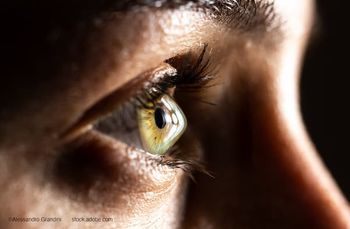
Factor in corneal astigmatism
Refractive outcomes with toric IOL implantation can be improved by taking into account the astigmatism of both the anterior and posterior surfaces of the cornea.
Key Points
Chicago-Refractive outcomes with toric IOL implantation can be improved by taking into account the astigmatism of both the anterior and posterior surfaces of the cornea, said Richard B. Jenkins, MD, at the annual meeting of the American Society of Cataract and Refractive Surgery (ASCRS).
The importance of considering posterior surface astigmatism in addition to that of the anterior surface is demonstrated by the results of a study comparing the prediction errors of corneal astigmatic correction with a toric IOL (AcrySof Toric, Alcon Laboratories) when using five different devices for measuring keratometry.
Whether preoperative cornea analysis was performed using optical low-coherence reflectometry (Lenstar LS 900, Haag-Streit), partial coherence inferometry (IOLMaster, Carl Zeiss Meditec), placido topography (Atlas 9000, Carl Zeiss Meditec), or manual keratometry (Javal-Schiotz, Haag-Streit), astigmatism was overestimated by about 0.50 D in patients having with-the-rule (WTR) astigmatism preoperatively and underestimated by about 0.40 D in patients who presented with against-the-rule (ATR) astigmatism.
The explanation for these results was seen using data obtained with the placido topography/dual-camera Scheimpflug imaging device that showed that corneal curvature in nearly all patients was steeper in the vertical meridian on the posterior surface, indicating that the posterior cornea, which is a negative lens, adds ATR astigmatism.
Added factors
"Measurements that neglect the independent contribution of astigmatism of the posterior surface of the cornea consistently predict more WTR astigmatism," said Dr. Jenkins, who is a research fellow, Baylor College of Medicine, Houston. "Once we began to document the suboptimal outcomes for correcting astigmatism with the toric IOL and understood the cause, we began to factor the posterior astigmatism into the calculations for IOL toric power and saw improvement in the accuracy of our astigmatic correction results.
"With this new approach, the mean manifest refraction residual astigmatism was just 0.09 D for WTR eyes and 0.10 D for ATR eyes," he added. "These data led Dr. Douglas Koch to develop the Baylor Nomogram for toric lenses, which he presented during the Innovator's lecture at ASCRS."
The study included data from 33 eyes of 33 patients that had keratometry measurements obtained with all five devices preoperatively and at 3 weeks after surgery. Manifest refraction and the axis of alignment of the toric IOL were recorded at the 3-week postop visit. Eyes were included in the analysis only if the IOL rotated =5° between the time of surgery and the 3-week follow-up visit.
Two original calculations were used in the analysis-anticipated corneal astigmatism (ACA) and astigmatic prediction error. ACA is the sum of the astigmatism from the postoperative manifest refraction and the effective toric power as calculated with the Holladay 2 formula. The astigmatic prediction error represents the deviation from the ACA and is calculated by subtracting the ACA from the astigmatism measured by the device.
FYI
Richard B. Jenkins, MDE-mail:
Dr. Jenkins has no financial interest in the material he presented
Newsletter
Don’t miss out—get Ophthalmology Times updates on the latest clinical advancements and expert interviews, straight to your inbox.



















































.png)


